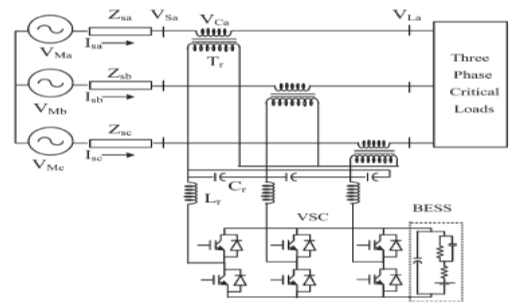A Fast Space-Vector Modulation
Algorithm for
Multilevel Three-Phase
Converters
ABSTRACT:
This paper introduces a general space-vector
modulation algorithm for -level three-phase converters. The algorithm is
computationally extremely efficient and is independent of the number of
converter levels. At the same time, it provides good insight into the operation
of multilevel converters.
KEYWORDS:
1.
Digital
control
2.
Pulse width modulation
3.
Space vectors
SOFTWARE: MATLAB/SIMULINK
BLOCK DIAGRAM:
Fig.1.Types
of multilevel converters.
Fig
.2.Classification of multilevel modulations.
CONCLUSION:
This
paper has presented a fast new SVM algorithm for multilevel three-phase
converters. The algorithm is general and applicable to converters with any
number of levels. In addition, the number of steps required to select the
nearest three vectors and compute their duty cycles remains the same regardless
of the number of converter levels or the location of the reference vector. In
addition, the computational efficiency of this algorithm makes it a useful
simulation tool for further study of the properties of multilevel converters.
REFERENCES:
[1]
L. M. Tolbert and F. Z. Peng, “Multilevel converters for large electric drives,”
in Proc. IEEE APEC’98, vol. 2, 1998, pp. 530–536.
[2]
Y. Chen, B. Mwinyiwiwa, Z. Wolanski, and B.-T. Ooi, “Regulating and equalizing
dc capacitance voltages in multilevel statcom,” IEEE Trans. Power
Delivery, vol. 12, pp. 901–907, Apr. 1997.
[3]
J.-S. Lai and F. Z. Peng, “Multilevel converters—A new breed of power converters,”
IEEE Trans. Ind. Applicat., vol. 32, pp. 509–517, May/June 1996.
[4]
P. M. Bhagwat and V. R. Stefanovic, “Generalized structure of a multilevel PWM
inverter,” IEEE Trans. Ind. Applicat., vol. IA-19, pp. 1057–1069,
Nov./Dec. 1983.
[5]
G. Sinha and T. A. Lipo, “A four level rectifier-inverter system for drive
applications,” IEEE Trans. Ind. Applicat., vol. 30, pp. 938–944, July/Aug.
1994.







